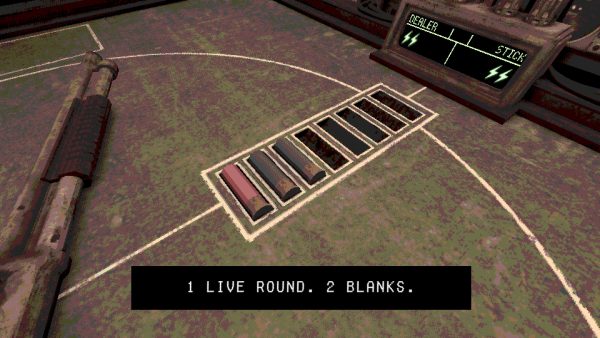Junji Ito’s “Uzumaki”: A Masterpiece of Modern Horror
March 28, 2023
“Uzumaki: Spiral Into Madness” is the title that drew me in. A spiral: what a unique concept for a horror novel. But if anyone could pull it off, it would be Junji Ito, who is often described as a 21st century H.P. Lovecraft – without the racism. Lovecraft, similarly to Ito, changed the genre of horror forever with his stories; many may think his bizarre concepts weird, but do not be fooled. Many of Ito’s works, of which “Uzumaki” is a notable addition, are beautifully crafted masterpieces encasing everything amazing about modern horror. Any fan of horror, especially cosmic horror, should read this book.
“Uzumaki” is actually a manga, which is a style of Japanese comic books and graphic novels. Although originally written in Japanese, it has been translated into English. However, in order to preserve the reading experience, the book’s format is still right to left. This is the opposite of the way English books and graphic novels are read, so it can take a minute to get the hang of reading it, but once it is learned, it is no different from reading any other book.
But the reading style is not what makes the book a beautiful work; the story and art are. One such thing that makes his work so great is his unique style of horror. Many horror authors, especially ones that make text-only books, rely on the reader’s imagination to do a lot of the heavy lifting in cosmic horror. They give little information about the creature or whatever it is to make it feel insurmountable and unknowable to the reader. Ito’s manga gives a visual, thus making it much more difficult to keep the reader in the dark. And yet, because of the inexplicable nature of the works he does, his stories still manage to maintain, sometimes even better than books without images, that sense of inexplicable dread and mystery.
Some more tools he uses to help elevate his works are the style of his writing, art, and horror. For his writing, he always delivers a sharp and powerful impact. Ito is a master of the page turn, saving the full-length, shocking panel where whatever horrific and inexplicable thing is revealed for the next new page. This not only perseveres and strengthens the mystery, but also gets maximum shock value from the reader, and is a masterful technique that speaks of Ito’s amazing ability to deliver impact through his stories.
His art style is also part of the style in his manga as well. It is semi-realistic, and typically does not incorporate colors. This style is also very impressive; he formats the panels with great care, once again helping deliver impact, and his skills to draw horrifically unique images is astounding. His art style is also well cultivated to fit both mundane scenes and horrific ones, which also greatly aids his storytelling.
On top of all this is his style of horror; he writes several types, from ones delving into human fears and the mind to cosmic horror, although from him the latter is more common. His stories use the characters more as vessels from which to see the spectacle rather than trying to make the reader connect and want the characters to stay alive. This care to the actual spectacle itself, as well as knowing that the characters are never really safe from the horror, leads to a great deal of suspense, which is what I particularly love about his works.
The final thing that makes his stories so great is his pacing. He is amazing at the pacing of his works; they build up just enough tension to keep the reader fascinated while not drawing it out too much or reducing shock value by revealing everything too soon. At first, I was worried that Ito’s pacing might be diminished by working on “Uzumaki,” which is a longer book, as he usually works on short stories, but that fear was quickly quelled. Ito is a masterful storyteller and illustrator, no matter the length of the story; for great examples, see his short stories, of which my favorites include “The Enigma of Amigara Fault,” “The Hanging Balloons,” and “Hellstar Remina.” “Uzumaki” was just as good, if not better than these stories, despite being at least thrice the length.
But what about the book itself? Well, as expected from Ito, it was amazing. The initial fears that a longer novel might be paced oddly were unfounded; the story did not suffer or feel drawn out, and instead the length allowed for more development, drawing the reader into Ito’s unique brand of madness. The story itself is based on an odd, but intriguing premise. The back, which explains the contents of “Uzumaki,” reads: “Kurouzu-cho, a small fogbound town on the coast of Japan, is cursed. According to Shuichi Saito, the withdrawn boyfriend of teenager Kirie Goshima, their town is haunted not by a person or being but a pattern: UZUMAKI, the spiral—the hypnotic secret shape of the world.”
The actual story itself, though, is closer to what is known as an anthology: a series of works that all feature unique stories tied together in some way. In this case, the way they are all tied together are the characters, the aforementioned Shuichi Saito and Kirie Goshima. Most of the nineteen chapters, except for the ending few, feature different stories, each story showcasing more and more of the town’s corruption due to the spiral. All the oddities happening to the town are viewed through the lens of Saito and Goshima. The nature of the anthology helps Ito guide the reader through a journey, chronicling the beginning of the town’s descent to its inevitable fate. And, believe me, the ending does not disappoint. It is still one of my favorite horror endings, somehow managing to conclude the story and also explain none and all of the events at the same time.
This book is just amazing, and I cannot recommend it enough. Not only is it a compelling read, but it is also inexpensive. Manga authors spend hours upon hours just making enough illustrations to fill a few pages, and usually that is reflected in high prices for small amounts of works. In contrast to that, I was able to buy a version of the novel released that has not only all nineteen chapters but also an extra story and a manga version of a little author’s note at the end. This amount of content made me estimate it would be in the forty to fifty dollar price range; instead, a local Barnes & Noble had it for under thirty dollars, and it is even less in some online shops. So not only is it an amazing piece of art; it is relatively cheap as well.
In short, “Uzumaki” is a masterpiece of modern horror, brilliantly and carefully crafted to turn what would otherwise be an innocuous shape into nightmare fuel. If one is interested in Ito and his works, I would highly recommend “Uzumaki,” as well as some of his other short stories. Also, several great video essays discussing Ito, and his works, have been uploaded to the internet; one notable instance is a series of videos by Tale Foundry on Youtube where Ito’s style and works are analyzed. All in all, Junji Ito’s works are a rabbit hole well worth delving into if one likes horror, and “Uzumaki” itself is, in my opinion, one of his best works. I would rate “Uzumaki” a ten out of ten; it is one of my all-time favorite books, and I would highly recommend it to any fan of horror.



